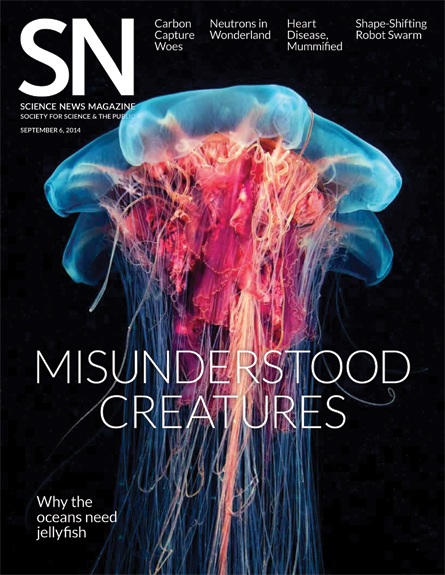Feedback
 In defense of jellies
In defense of jellies
Jellyfish may not be as lovable as some other animals, but they do more for their ecosystems than most people realize. Susan Milius explained that gelatinous creatures provide food for some ocean dwellers, homes for others and more in “Seeing past the jellyfish sting” (SN: 9/6/14, p.